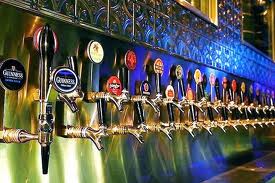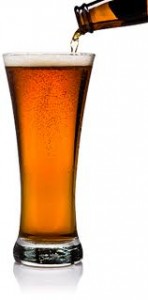 I am out of town for a couple weeks traveling out east for work. It will surprise you not that I am also finding time for some beer visits (say it isn’t so!), which means I have been sitting in some good brewpubs and craft beer bars. I will write more later about the trip and the beer I tried, but for the moment I want discuss something that has been on my mind as I ponder my beer. Actually it is something I have been mulling over for a long time, but I had a couple experiences on this trip that bring it to the forefront.
I am out of town for a couple weeks traveling out east for work. It will surprise you not that I am also finding time for some beer visits (say it isn’t so!), which means I have been sitting in some good brewpubs and craft beer bars. I will write more later about the trip and the beer I tried, but for the moment I want discuss something that has been on my mind as I ponder my beer. Actually it is something I have been mulling over for a long time, but I had a couple experiences on this trip that bring it to the forefront.
In short, it is my thoughts on some basic things every beer bar needs to do if they want to be taken seriously by beer aficionados. It is one thing to offer up a good selection of craft beer, another to create an experience that beer fans and the beer curious will appreciate.
I am not talking about the subtle things here, like pairing suggestions, glassware shape or coaster design. I am speaking of the simple things: Craft beer bar 101. It may seem obvious and straightforward, but you would be surprised how often even these basic things get overlooked. It is not just on this trip, and not just in more marginal beer bars. Some surprising sources neglect these basics.
So for the edification of bar owners and the venting opportunity for beer consumers, here is my list of 5 things any craft beer bar MUST do as a basic rite of entry.
The first is post your menu. Somewhere. Please. Make it easy for a newcomer to work out quickly what options you provide, who makes it (nothing frustrates me more when the brewery name is not attached), and – if you want bonus points – where it is made. I don’t care if it is a paper menu on the bar/table, a chalkboard or an interactive IPad screen. Just don’t make me sit clueless for 5 minutes and then force me to ask for the beer list.
Second, don’t be stingy with samples. There are two ways bars can go wrong here. First, is when you don’t suggest a taste first. If it is clear the consumer hasn’t tried the beer before, give them a little try before making them get a pint. I am fine asking for a taste, but sometimes I feel I shouldn’t have to. If I say “What is X like?”, that is your clue to offer me a couple ounces. Which leads me to the second error. Too small a pour for the sample. Don’t get me wrong, I am not trying to scam free beer here, but if you don’t give me enough to coat my mouth, I haven’t really tasted it. I have been given 1/2 ounce samples in some places. That is barely enough to my tongue wet. Just pour a couple ounces and everyone is happy. Which means return customers (and better beer writer reviews). You won’t even notice it in your bottom line.
Third, have some kind of flexible taster tray option. Often, especially when I am traveling and know I won’t make it back to a place for a long time, my goal is to try as many beer as possible. Meaning I want small volumes. 5 4-ounce tasters equal a pint. Five beer for the price of one (metaphorically – I am completely fine paying more for a taster tray than its equivalent in full pints. I know they take time and energy.) This time there are three issues that emerge. There are places that flat-out don’t offer taster trays at all, which is incomprehensible to me. I know they can be a hassle, but is there a better way to expose your beer to a new customer?
 Just under that are the places that pre-set the taster tray – telling you which 4, 5 or 6 beer you can try. That completely misses the point. A tray is about letting the consumer pick the range of beer they want to sample. Some pre-fab offering just irritates me. Third, is the issue of too much or too little. I recently got a taster tray of nine 6-ounce samples (and it cost a mint). Really, you think that is a reasonable amount of beer for one session? I also have received three 4-ounce samples, which feels not quite enough. Your magic range is four to six. Offer four to six beer of four to six ounces each. Ideally you are aiming for 20-25 ounces of beer, around a pint or so.
Just under that are the places that pre-set the taster tray – telling you which 4, 5 or 6 beer you can try. That completely misses the point. A tray is about letting the consumer pick the range of beer they want to sample. Some pre-fab offering just irritates me. Third, is the issue of too much or too little. I recently got a taster tray of nine 6-ounce samples (and it cost a mint). Really, you think that is a reasonable amount of beer for one session? I also have received three 4-ounce samples, which feels not quite enough. Your magic range is four to six. Offer four to six beer of four to six ounces each. Ideally you are aiming for 20-25 ounces of beer, around a pint or so.
A fourth key error is staff that don’t know your beer. I am not expecting them to be as on top of styles and flavours as a guy like me, but I do expect they can tell me what the beer is and its basic flavour profile. I was in a brewpub recently where the server told me a particular beer was “dark and kinda hoppy”. That is all she could tell me. Okay, thanks for that (as it works out it was mostly likely a Cascadian Dark, so maybe her description wasn’t so bad). At a decent craft beer bar servers should have basic knowledge of styles and the flavour wheel. I know that turnover is huge in the service sector, but it doesn’t take more than a couple hours to train someone in that. So do it.
Finally, and this may seem like pickiness, don’t be afraid of wastage. It comes with the territory. It really bugs me to see bartenders setting aside glasses of foamy beer to use later, or – worse yet – transfer beer from one glass to another mid-pour. This issue is a basic “respect the beer” matter for me. Beer doesn’t like multiple transfers and it certainly doesn’t get better sitting in a half-filled glass for 20 minutes. Treat the beer the way it is meant to be. Foam happens, even in the most finely set up tap system. Suck it up. Either slow down your serving times – I am happy to wait a minute or two more if I can see that the beer is being treated well – or adjust your pressure. Really, just slow down your serving time expectations. That solves everything.
Yes, these points seem like they should be obvious. But for some reason these mistakes keep cropping up. I see them in one shape or form quite often – including a handful of times on this trip alone. There are amazing beer bars our there that have figured these things out and more and they are all to be commended. It isn’t hard to serve excellent beer in an excellent fashion. Aspire to it and get these five points down immediately. Then the world will be a better place.


Leave a Reply